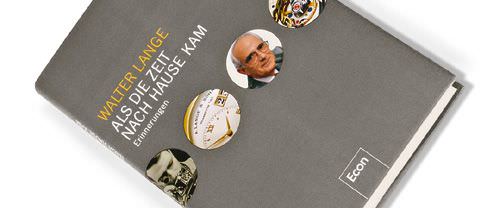A small book written by Walter Lange and an extravagant celebration of the 100th anniversary of the Karl Scheufele company put the spotlight on the history of two of the most important watch and jewellery companies in Germany last year, focusing changeable stories of courage, brilliant ideas, hard work, misfortune and luck.
Everybody knows Chopard. But if, on the other hand, you are looking for somebody to tell you something of a company named Karl Scheufele, be prepared for a long search. However, though the roots of Chopard were laid in Switzerland in 1860, this old watch brand was saved from vanishing when it happened to be purchased by Karl Scheufele III in 1963.
Karl Scheufele III, today President of Chopard International, was already then head of the company ‘EsZeHa’ which had been founded by his grandfather in 1904.
Karl Scheufele I was orphaned at the age eleven. However, though he had to live in the Pforzheim orphanage because there were no relatives to care for him, Karl finished school normally and started a commercial apprenticeship in a jewellery factory in the 1890s.
In 1904 Scheufele established his own jewellery manufacturing business. At that time Pforzheim was the German jewellery centre with more than 500 producing companies, which also supplied the Swiss watch industry with watch cases. At the same time, a different, contrary trend became visible: Pforzheim case producers bought Swiss movements in order to make complete watches. Around 1911 Scheufele turned to make watch equipment such as a clip which allowed the wearing of small ladies’ pocket watches with a leather strap on the wrist.
World War 1 caused the first crisis for the young company, the founder was called up. After his safe return in 1918, Karl Scheufele had to restart his business at zero. The 1920s also became a golden era for his enterprise, followed by an economical crash in 1929. By this time, Scheufele had stopped producing jewellery and turned to watch manufacturing with his brand ‘EsZeHa’, the German pronunciation of the first three letters of his name.
Scheufele’s son and later successor Karl II had to start his professional career in the USA, where his father sent him in 1925. Unable to get a job as goldsmith, he had to make his living dishwashing and working in a sack factory.
During World War II, the town of Pforzheim was nearly totally destroyed through allied bombing and Karl Scheufele II moved to Garmisch-Partenkirchen with his family. But by 1947 his Pforzheim enterprise was active again.
In 1958, Scheufele, who had been seriously wounded during the war in Russia, had to hand over the company to his son Karl III. Then a young man of only 20 years of age he made, ably assisted later on by his wife Karin, EsZeHa, Karl Scheufele and Chopard what it is today.

Walter Lange’s book is entitled ‘When Time came Home’ (Als die Zeit nach Hause kam) and is dedicated to his deceased wife Jutta and Günther Blümlein (former CEO of IWC and Jaeger-LeCoultre), who worked with commitment on the re-establishment of “A. Lange & Söhne” in the 1990s after the re-unification of Germany. He died in 2001.
Lange’s book easily could be taken for a novel. In fact the essence consists of the memories of a man who has witnessed all the ups and downs of the then and now world famous watch brand from the 1920s, when he was a small boy until today. Everything Lange describes about the old watch company in Glashütte happened. It is a similar story to the one of Scheufele.
Also founded with enthusiasm and courage by Ferdinand Adolf Lange in 1845 and ever since led by his sons and grandsons as successors until the founding of communist Eastern Germany, the company faced numerous calamities such as two World Wars, economical difficulties and personal problems.
Walter Lange, the great-grandson of Ferdinand Adolf, like Karl Scheufele II, was seriously injured during the war. The Scheufele factory in Pforzheim, like the Lange building in Glashütte/ Saxony was destroyed by bombs.
After 1945, however, the Lange family business was disadvantaged because of being in the wrong place. After the expropriation of the factory by the communist rulers, Walter Lange was forced to become a member of the socialist labour union. The obligation to work in the nearby uranium mines was the response to his refusal.
Walter Lange fled to Western Germany and ended in Pforzheim, were he worked in the watch and jewellery branch until his retirement. Already a pensioner, he could hardly believe his luck at seeing his former family company become prosperous and famous again.
In the end, both Karl Scheufele III and Walter Lange look back on unpredictable lives of hard work, misfortune and some luck. Both men, however, seem to have one sentiment – gratefulness.





